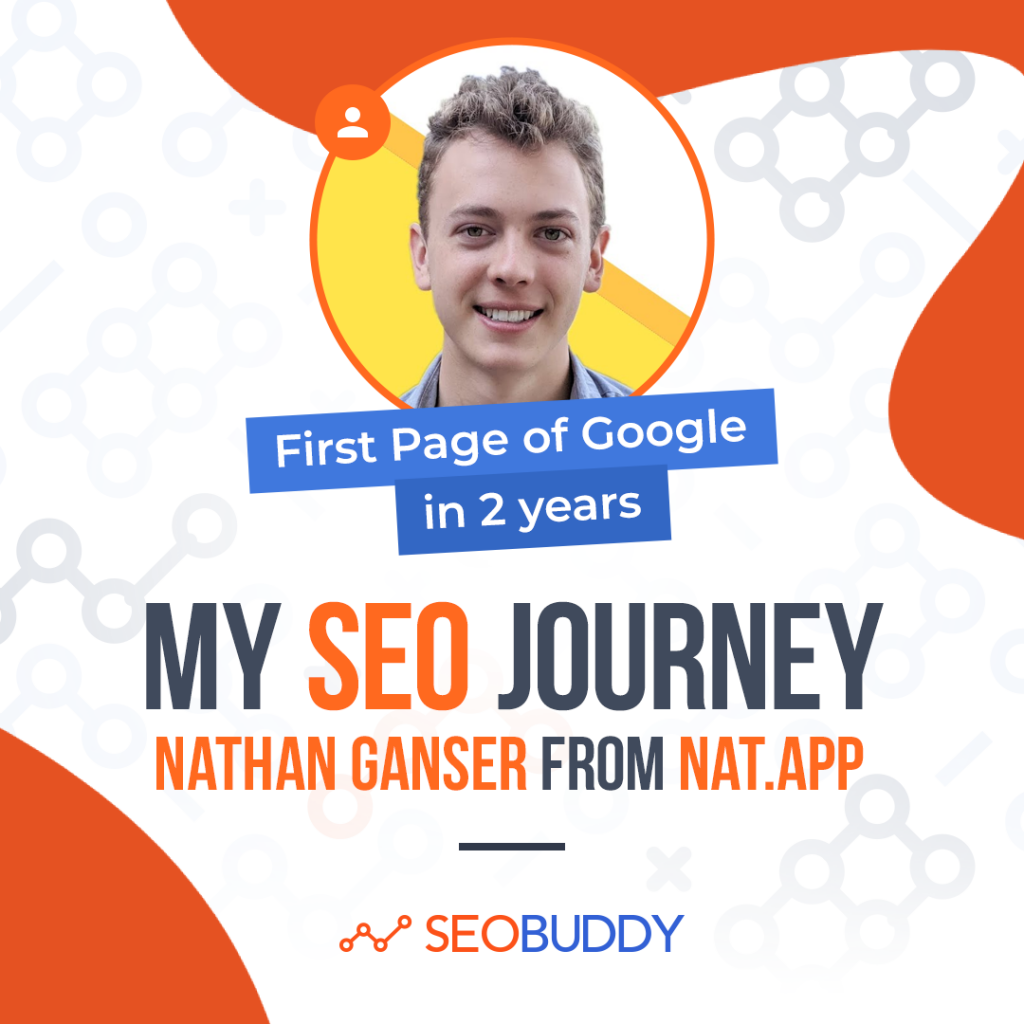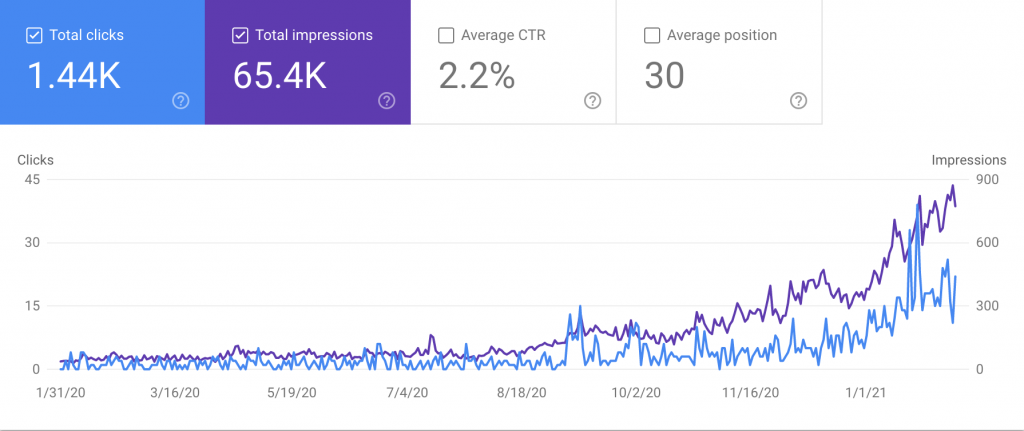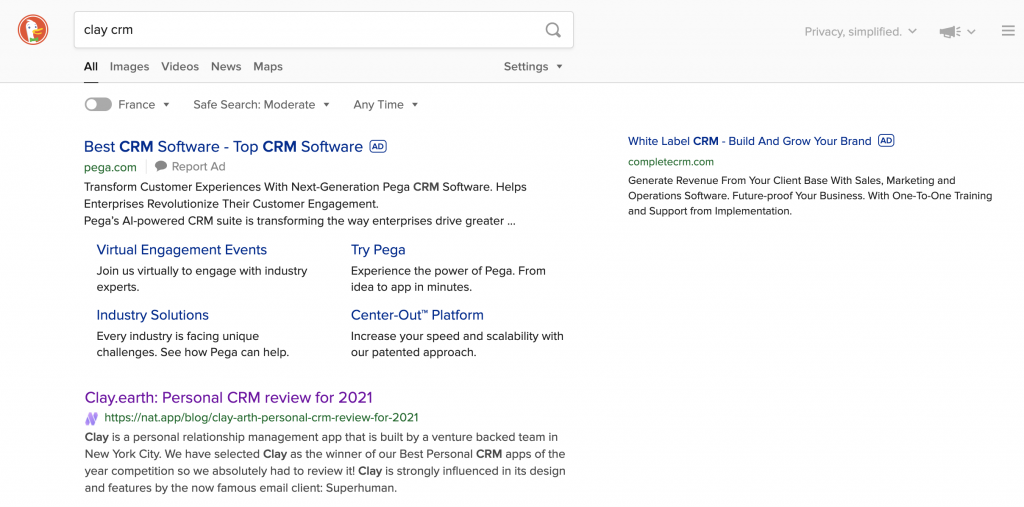My SEO Journey: Nathan Ganser from Nat.app explains how he got to the first page of Google in 2 years
My SEO Journey is a new series where entrepreneurs and Indie makers will share their honest SEO Journey filled with failure and success, and most importantly proven results. Episode 1 starts with Nathan Ganser from nat.app that we had the pleasure to meet on Pioneer.app

I’m Nathan the founder of a small business building a Personal CRM.
We charge our customers around $20/month, which means we really can’t afford paid ads nor do we want
to as they would take our margins down by a lot. This means that the only option left is content marketing
and SEO, both of which we’ve done a lot over the past two years.
While two years might not sound like a success story, I don’t think you can expect to get to the first ten
search results much faster than that if you’re starting from scratch. But nor should you expect to have built a massive business in 2 years.
I expect to spend a total of at least 6 years or so on this business, so two years to start ranking seems like a
good deal.
In this post, I’ll share my step-by-step approach, inspired a lot by Romain’s SEO Checklist and tips, that let me rank on the first page of Google after a little less than 2 years.

Choose a few good keywords
Like every business, you need to understand what people type into Google when they’re looking for what
you’re offering.
The easy trap is to select a keyword that is too general and therefore too hard to rank for. In our case, the
main keyword we are focusing on is “personal CRM“. We found this keyword by talking to our customers and researching the web.

Usually, people’s search journey starts by typing something like:
CRM for networking
personal relationship manager
CRM for personal use
… and then they find an article that mentions personal CRM, so they go back to Google and type it in.
We’re also interested in ranking for those lower traffic keywords but given that they won’t drive nearly as
much traffic as our main keyword, our focus remains on that keyword.
To illustrate my earlier point, trying to rank for the general CRM keyword would be a mistake for two
reasons:
- It’s much harder to rank as we’d be competing with massive companies that have been around forever.
- It doesn’t accurately represent what we offer, so even if we did rank, we would not convert people.
Unfortunately, it’s hard not to make the mistake because those keywords are so attractive. For example, we’re getting nearly as many impressions for being on the second page of CRM apps as for being on the first page for personal CRM!
To summarize, find your main keyword that you’ll give all your attention to, and then find 5-10 secondary keywords that you’ll focus on as time goes on, I find the “Keyword Research” SOP of the SEO Checklist very useful with the perfect process to find these keywords.
Regularly create content for your blog
This is of course no secret. You need to create content. One mistake I’ve found competitors make is to create boring content just for the sake of creating content, here are a few headlines:
- 5 Reasons to Grow Your Business with Networking
- 5 Types Of People You Need in Your Network
- Qualities Every Great Leader Should Have
This is just boring stuff no-one cares to read. Don’t do that. Creating content is the best way to convey
your values and beliefs. Basecamp has done an excellent job at sharing their contrarian beliefs and got quite popular for doing so.
Do the same. Share what you believe, don’t try to hide who you are. Be open and transparent with your
readers. Pretending to be a big emotionless corporation doesn’t make for good content to read.
You should view every piece of content that you write as a long-term investment that will only return fruits in two years. Like a grand-parent planting a tree for the next generation, every blog post you publish is traffic for your future self in a year or two.
The SEO Checklist bonus “52-Week Content Calendar Strategy” was also very useful to build my content pipeline.
Write landing pages
Landing pages are an interesting form of content because you can create one per niche, making it basically an infinite source of content.
The trick is to re-purpose existing content (for example your main landing page) and modifying it to write a personalized landing page for a niche of your customers.
For example:
- Personal CRM for freelancers
- Personal CRM for investors
… and so on. This is where the secondary keywords we defined earlier come in handy.
Write content about your competitors
This is something I’ve found to work extremely well.

If your competitors aren’t that well known, reviews, comparisons, and so on will start to rank surprisingly fast for their keywords!
I’ve now made it a habit to review all our competitors and in one case where our competitor hasn’t done
any content creation, our review is actually ranking higher than their main website.
Another good way to create content about competitors is to compare yourself to them. We’ve written
many comparison landing pages as well as a Top 5 Personal CRM Apps ranking that Google seems to like a
lot.
Slowly get backlinks
I say slowly because you don’t want to mess this up. You want your backlinks to steadily grow over the
years, you don’t want big spikes that fall down.
A great way to get backlinks is to write content for content websites like Substack, Medium, Twitter,
Reddit, Indie Hackers, Hacker News, Facebook, Product Hunt, …
Those domains already have a strong reputation and will rank much higher on Google. Some of the content I write is never published on our website blog but on those platforms.
Below is an example of a Medium article that I wrote years ago about the best apps in our market and that
got picked up by Google for some reason and has been ranking higher than any of our website content. If I
had published this article on our own blog, it would never have gotten that much traffic.

Finally, the other good way to get backlinks is to offer your friends to write articles for their blog and just
include a link to your website in the article.

Now it’s time to discover the other 102 steps that will get more organic traffic flowing to your website. Get the SEO Checklist here.
Want to get a sneak peek of what it looks like?
Enter your email and get a free demo version of the SEO Checklist.
Experiment with different formats
If you look at the different tabs that Google shows when you do a query, you’ll see that there are many things you can rank for. Depending on the industry you’re in, you can try to create high-quality images or videos.

It is much easier to rank on Youtube than Google. As an example, one video I recorded is already ranking first on Youtube for our main keyword.
One thing I don’t recommend is podcast content.
It’s hard to be found and it’s not the kind of thing people search for.
This is the SEO Playbook I’ve been following along for the past two years and it has worked well so I can only recommend it. Good luck on your SEO journey!


